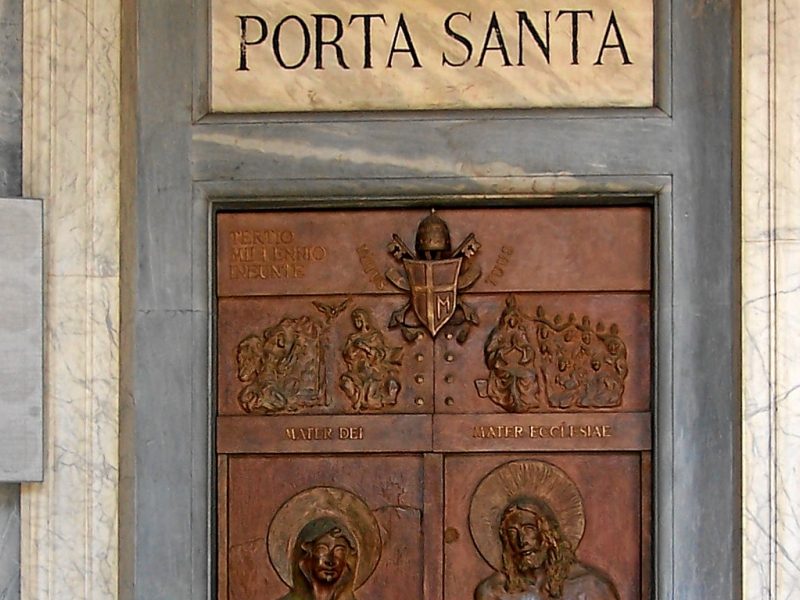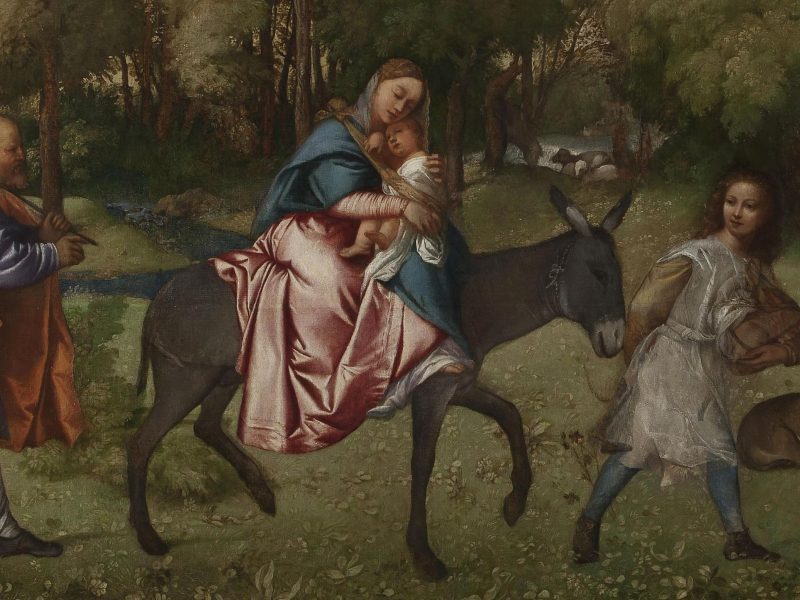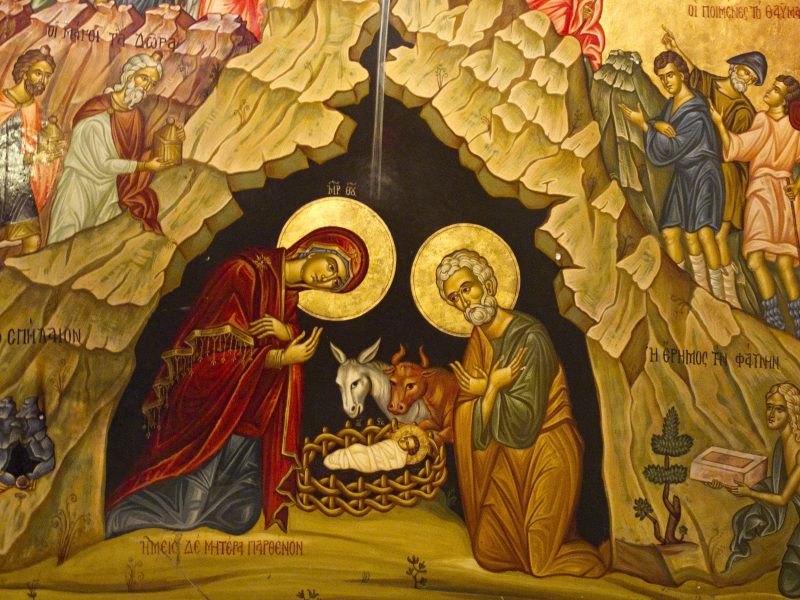
Looking Through
Fourth Sunday of Lent. Fr Oliver Keenan preaches on the importance of prepositions.
The Gospel points back to the time of the Great Exodus, when the Israelites were instructed to seek salvation from the pestilence of fiery serpents by raising their eyes to a bronze serpent, fashioned by Moses. Investing hope in works of art is a perilous business, as the Israelites would have remembered well from the incident with a golden calf. It was, after all, Moses himself who discovered this outbreak of idolatry as he returned from forty days and forty nights spent apart from the people, receiving the law on Mount Sinai. Idolatry here was sparked by fear, a great anxiety that Moses had abandoned the people, leaving them deprived of contact with the Lord. So there is a certain irony to Moses obediently fashioning a bronze serpent to function as an instrument of salvation.
Yet idolatry seems largely a subjective matter of how we look and orientate ourselves to the good things of God: anything can become an idol, if we want it to be. The Israelites have different way of looking at Moses’s art, and live in a different kind of fear. Whereas the golden calf once absorbed their gaze as the focus of their hope, the Israelites now look through the serpent as if through a translucent sign. Their focus lies beyond the materiality of the bronze, settling in something that cannot be seen (or at least not yet): the power of God who has promised to heal. The bronze is a mere arbitrary token of God’s promise, with no intrinsic power of its own. By God’s grace it is a reassuring accommodation to their fears, so that their fears no longer break communion with God, but are placed inside a fundamental trust in the God who never abandons.
That which the Israelites intuited beyond the medium of a bronze serpent is, in Christ, laid bare. Christ is the visibility of God. In Christ, God’s power to heal and redeem has been made manifest on the public stage. We no longer have before us a mere arbitrary token of reassurance, but the definitive manifestation and realisation of God’s plan for us; salvation and redemption are at hand. Consequently, like the Israelites before us, our way of looking has also been reconfigured (even transfigured). By faith, we gaze not on a human work of art but on God’s work of art, as we witness the divine power re-fashioning that which is broken and making beautiful that which had been degraded. This work of art, this manifestation of power, paradoxically takes the form of a life crucified and risen, yet in that life we see the glory of God’s purposes being fulfilled.
As St John underlines, the raising up of the serpent points forward to the raising up of Christ. In the most obvious sense, this points to the crucifixion. Yet the raising of Christ can be taken in both the active and the passive voice: we find an allusion here not only Christ being raised up on the cross of Good Friday (for all to gaze upon), but also of his rising to break the bonds of death on the third day. This raising up of Christ in his passion are moments in the exaltation of humanity. Christ’s journey through passion, resurrection and ascension charts a course by which we who are baptised into his death will follow into his resurrection.
The prepositions ‘through’ and ‘inside’ were crucial in differentiating the Israelites’ gaze upon the token bronze serpent from idolatry: they looked through the serpent, their fears operated inside the embrace of communion with God. These same prepositions are used to narrate our belonging to Christ, but they now take on a new meaning. They no longer function to point our knowledge beyond the things we know with our senses, but rather indicate the way in which our reality is changed by God. It is through Christ’s passion and resurrection that—the second reading tells us—we are becoming God’s work of art. By incorporation into Christ, we too have died to sin and are rising to eternal life. So when we gaze on Christ crucified and risen, we see not only a pledge of God’s love as if it were a promise distant from us, but actually glimpse that which, by baptism, is our innermost identity and the drama by which we are being set free.
It is not hard to find resonances between the situation of the Israelites and our own times. Ours is a time both of pestilence and, if not of overt idolatry, a time in which many are grasping onto things that give a sense of assurance and stability amidst so much uncertainty. In gazing on Christ we are given not only an infinite assurance, but all that we need. This Lent, Christ invites us to place our fears inside his death and so anticipate here-and-now our resurrection.
Readings: 2 Chronicles 36:14-16,19-23 | Ephesians 2:4-10 | John 3:14-21
Sorry, the comment form is closed at this time.



A Website Visitor
Your final paragraph spoke powerfully to my heart and the final sentence blessed me deeply. Thank,you!